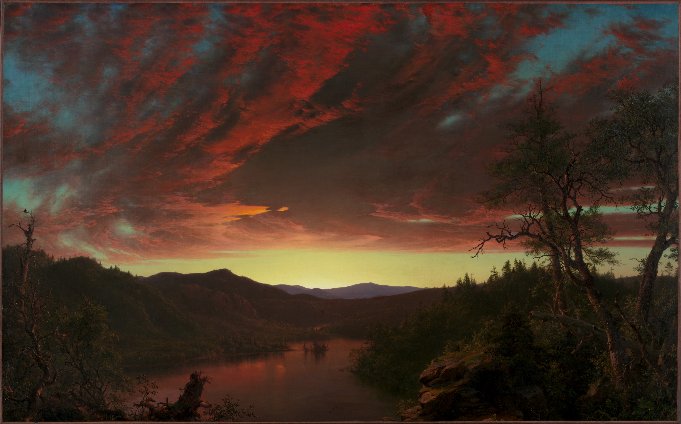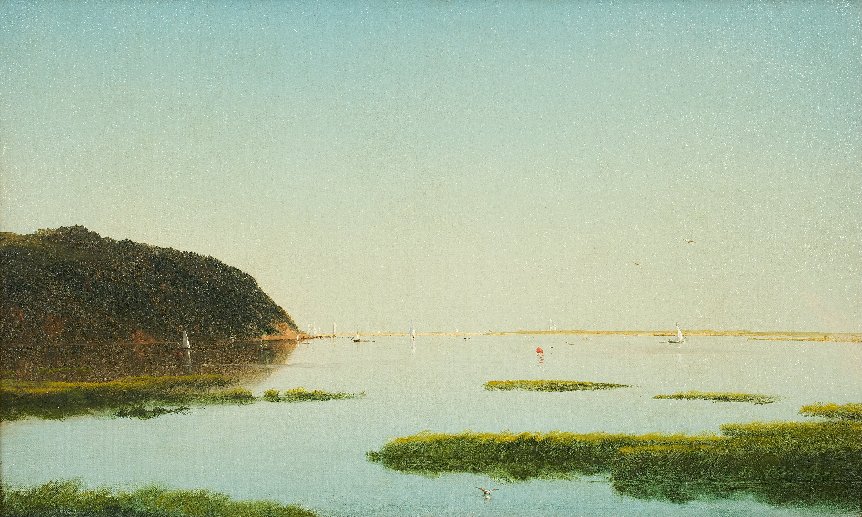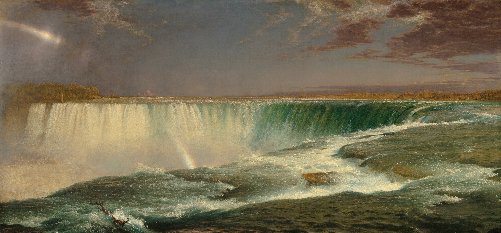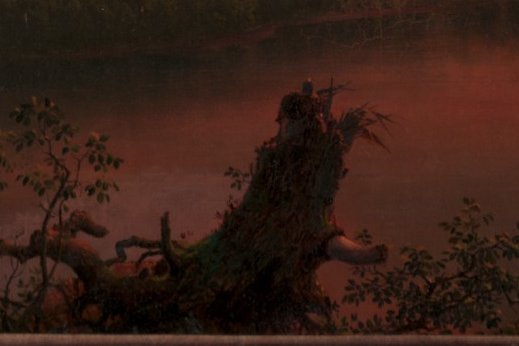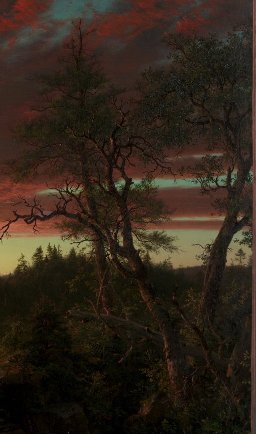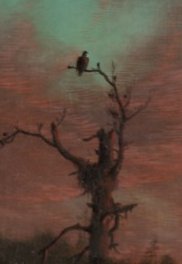Hi, I'm Sam Hildebrand
Project maintained by Sam-Hildebrand Hosted on GitHub Pages — Theme by mattgraham
This is a paper that I wrote for a general ed art class in college. Since I put so much time into it I thought I would let it see the light of day here.
Art Reflects Nature as Nature Reflects God: The Beautiful Reflections in Twilight in the Wilderness (1860) by Frederic Edwin Church
Twilight in the Wilderness, by Frederic Edwin Church, reflects the fleeting, unspoiled beauty of the American northeast in the 1860’s. It depicts, with photographic clarity, a sunset above rolling hills. It depicts a cold, clear valley lake. It depicts a thriving pine forest. More than this, it depicts nature as the creation of God, and tell a story of communion with God, through nature. Twilight in the Wilderness is an attempt at a double reflection; it is an attempt to reflect nature reflecting God.Twilight in the Wilderness is a luminist style oil painting, which means that light is key to the landscape scene it portrays. Typically luminist paintings have an aerial perspective, but Twilight in the Wilderness uses the view from a tall hill to achieve the same effect. Twilight in the Wilderness is set apart from other luminist paintings because it uses very warm tones as opposed to the soft, cold tones usually associated with luminism. Twilight in the Wilderness is also extremely realistic. The attention to detail in the rock on the right foreground and the trees in the right center is staggering.
Twilight in the Wilderness (1860) by Frederic Edwin Church:
View of the Shrewsbury River, an 1859 luminist painting by John Frederick Kensett, another example of Luminism:
Frederic Edwin Church (May 4, 1826 – April 7,1900) was born in Hartford, Connecticut to Joseph and Eliza Church. He became famous for his landscapes. His painting New England Scenery shows his love of intricate details. New England Scenery and Twilight in the Wilderness, like many of his paintings, are composite landscapes, composed from numerous sketches from real places to make one more complex imaginary place. His painting Niagara, on the other hand, shows his ability to accurately portray specific place. Niagara is a painting of Horseshoe Falls, and was painted following several studies (more quickly produced painting on paper) of the area.Twilight in the Wilderness is set near the peak of a hill, which overlooks a lake. The sky is awash with vibrant red and orange, as the distant sun sets. On the right hand,three sparse tree jut obliquely out of the landscape. On the left, a decaying stump, and a small tree, not much more than a twig. On the tree is perched a small bird.Twilight in the Wilderness is a beautiful depiction of landscape, but it is more than that. The stump is a wilderness altar. The tree trees symbolize three crosses. Perhaps the bird symbolizes a message from God.
Niagara by Frederic Edwin Church:
New England Scenery (1851) by Frederic Edwin Church:
Twilight in the Wilderness depicts nature, not as god, but as the work of God. To understand a spiritual connotation in Twilight in the Wilderness, one must realize that just as the artist somewhat represents himself in his artwork, so, perhaps would God represent himself in his handiwork. Church’s dedication to the intricate detail in the trees is perhaps comparable to the Creator’s dedication to the intricate detail in the universe. As Church perhaps prided himself with the glory and beauty of his sunset, so would God at his creation. As Church spent time carefully painting each tree in a vast forest, perhaps God spends time forming individual people in vast world. Art reflects nature as nature reflects God. Church’s Twilight in the Wilderness reflects the American northeast reflecting an individual’s communication with God. However, maybe for you it does not reflect an individual’s communication with God. Maybe it is just a pretty picture. Maybe something else speaks to you. Reflection is dependent on perspective. Art not only reflects nature; it reflects the nature of the viewer.
Details from Twilight in the Wilderness by Frederic Edwin Church:
“the wilderness altar”:
“the three trees”:
“the bird on the left”:
Duscuss posts at r/theScH_blog.
Posts:
-
I Make the Thinking Sand Think
05 April 2024
-
The Story of George (the cat)
09 July 2023
-
How to take the Security+
19 January 2023
-
Lunar Backgrounds
19 May 2021
-
Art Reflects Nature as Nature Reflects God: The Beautiful Reflections in Twilight in the Wilderness (1860) by Frederic Edwin Church
01 October 2020
